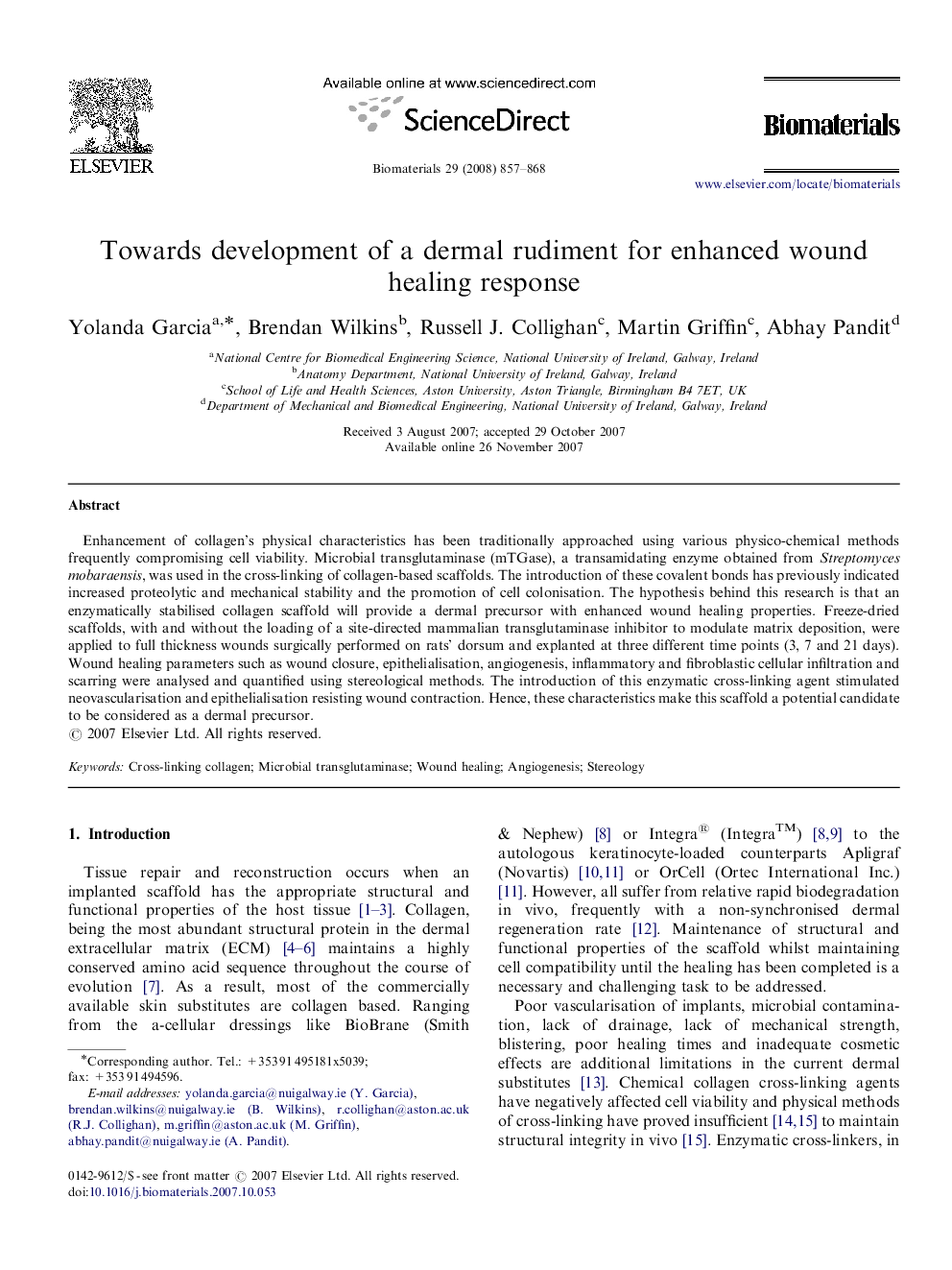| Article ID | Journal | Published Year | Pages | File Type |
|---|---|---|---|---|
| 9960 | Biomaterials | 2008 | 12 Pages |
Enhancement of collagen's physical characteristics has been traditionally approached using various physico-chemical methods frequently compromising cell viability. Microbial transglutaminase (mTGase), a transamidating enzyme obtained from Streptomyces mobaraensis, was used in the cross-linking of collagen-based scaffolds. The introduction of these covalent bonds has previously indicated increased proteolytic and mechanical stability and the promotion of cell colonisation. The hypothesis behind this research is that an enzymatically stabilised collagen scaffold will provide a dermal precursor with enhanced wound healing properties. Freeze-dried scaffolds, with and without the loading of a site-directed mammalian transglutaminase inhibitor to modulate matrix deposition, were applied to full thickness wounds surgically performed on rats’ dorsum and explanted at three different time points (3, 7 and 21 days). Wound healing parameters such as wound closure, epithelialisation, angiogenesis, inflammatory and fibroblastic cellular infiltration and scarring were analysed and quantified using stereological methods. The introduction of this enzymatic cross-linking agent stimulated neovascularisation and epithelialisation resisting wound contraction. Hence, these characteristics make this scaffold a potential candidate to be considered as a dermal precursor.
